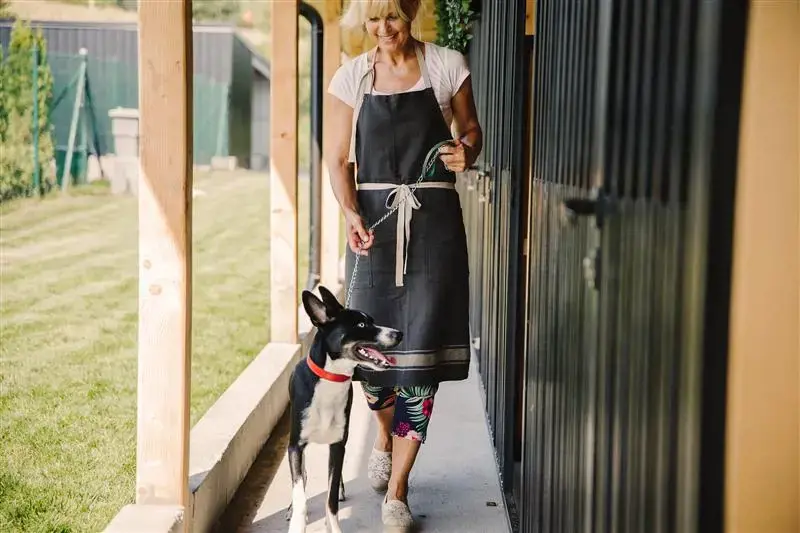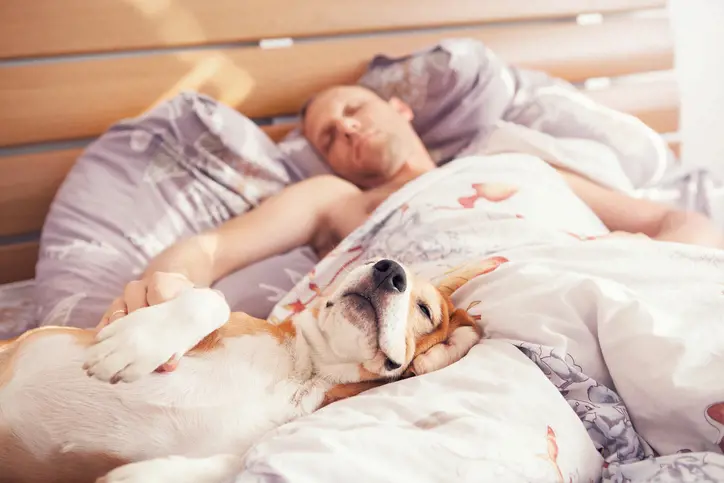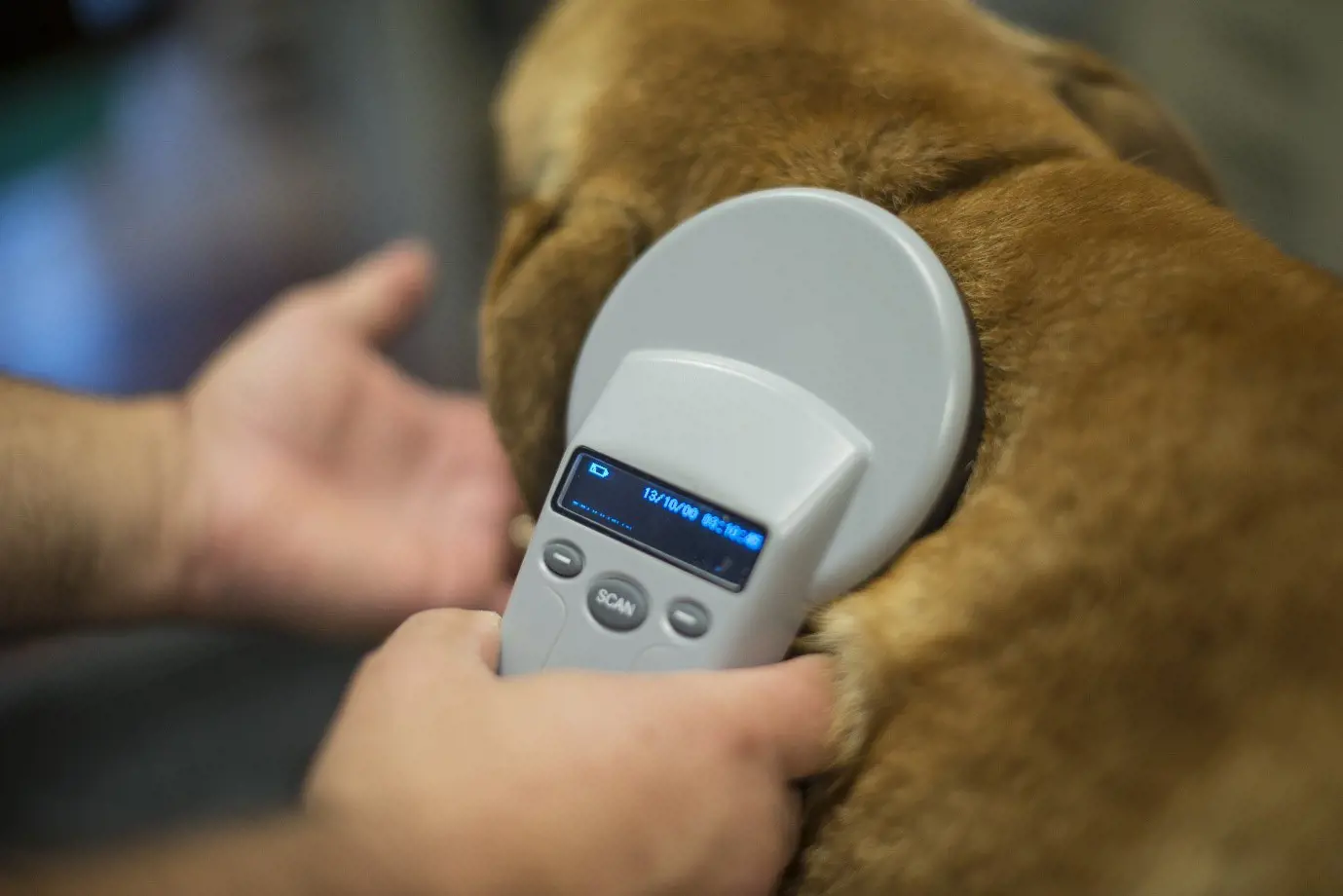Velcro dog syndrome: Is it separation anxiety?
23rd January, 2023
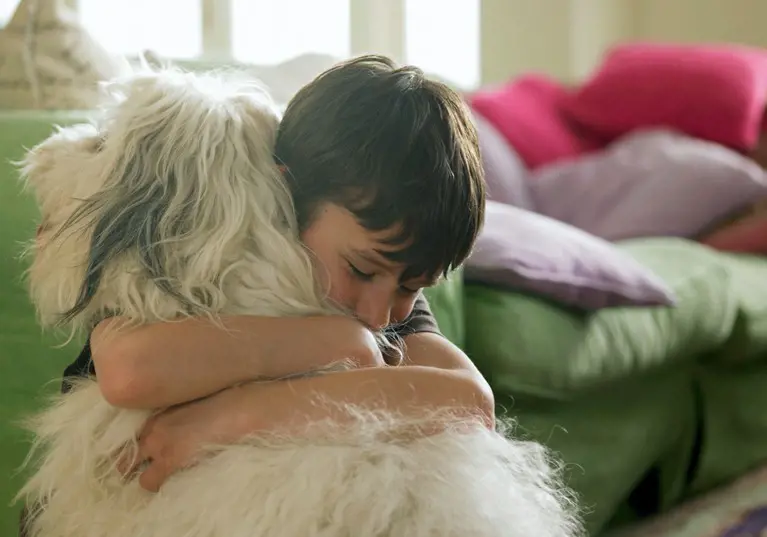
Does your four-legged friend seem to stick to you like glue? Take our quiz to find out if it’s a simple case of velcro dog syndrome or they have separation anxiety.
Your new puppy is settling in well and getting used to life with you as their family, but what happens when it’s time to leave them alone?
Perhaps you work away from home or simply need to pop to the supermarket. You can’t be with your canine companion 24/7, no matter how much you’d like to be!
You start to hear whimpering as you close the front door, and your heart sinks. It’s OK, you’ll only be gone a little while.
But that 15 minutes it takes for you to pop to the shop feels like a lifetime to your faithful friend. You open the door to find chewed slippers and a puddle of pee - not the best start to the day!
And that’s not all – your neighbour pops their head out their house to say your pup’s been barking and whining, longing for your return.
Your beloved pooch has been stuck to your side ever since and you dread leaving them alone. Are they just a clingy breed or are they suffering from separation anxiety?
In this blog, we’ll tell you how to spot the difference and what you can do to help – take our quiz to see what’s up with your pup!
We care about your dog’s wellbeing just as much as you do, so we’ll also share where to insure a pet and get them help in an emergency.
What are velcro dogs?
If you find yourself tripping over your pup when you’re making a cuppa or that they follow you literally everywhere, they might have velcro dog syndrome.
What’s that, you ask? Well, the name is a bit of a giveaway – it means your pup sticks to your side wherever you go. Upstairs and downstairs. From one room to another.
So, is it the same as separation anxiety?
Not exactly. Even though they are quite similar (in that your dog can’t get enough of your company), there is one major difference.
A velcro dog might be a bit put out when you leave the house, but one with separation anxiety will experience emotional distress and panic when left alone.
So, if your pet will happily stay by themselves for a few hours when you go out, it’s likely they are just a clingy velcro dog and enamoured with their pet parent – and who doesn’t feel all warm and fuzzy inside with this kind of unconditional love, right?
If you’re worried it might be a little more serious and that your four-legged companion is suffering the moment you shut the front door, we’ve got some tips below.
Give your vet a call if you want some pro tips on helping your pup get over their separation anxiety. When you insure a pet with Purely Pets, you can access our 24-hour vet video service for some quick advice.
Are certain breeds clingier than others?
Faithful and friendly, most dogs will stick by their humans through thick and thin, but some become more attached than others.
In fact, certain breeds might be more predisposed to clinginess than others. If you own one of the following breeds, don’t be surprised if they tag along wherever you go.
- Border Collie
- Pug
- Hungarian Vizsla
- Chihuahua
- German Shepherd
- Labrador Retriever
Canines that were bred as working or lap dogs have a higher dependency on us humans, so are more likely to develop an extreme fondness of their owners.
What causes a velcro dog to act this way?
Some dogs simply love to dote on their pet parent from the moment they come into your life, while others develop this clingy behaviour over time.
So, why would a once independent pup suddenly glue itself to your side? There are a few reasons:
A traumatic event
Has your pup been feeling clingy since they came back from the kennels? Perhaps they thought you’d left them there for good!
Fireworks and loud noises can also create stress in our canine friends and cause them to seek your protection.
Dramatic change
Moving house or having a baby can have a huge effect on your loyal pup. They might feel cast aside (even though you know this isn’t the case) and try harder to be included in everything you do.
Illness or injury
When you’re feeling under the weather, all you want is to be looked after, right? The same goes for your pet. Of course, you can insure a pet to help get them back to good health, but sometimes their newfound dependency remains.
In heat
If you haven’t spayed your female dog and she comes into season, she might become extra clingy. Getting her neutered might help calm this behaviour as well as avoid unwanted pregnancies – this can reduce the number of health risks, too!
Getting old
As your dog’s eyesight and hearing get worse, they might look to you for familiarity and comfort. Trying to insure a pet as they age can be a challenge, but that’s no problem at Purely Pets as our policies have no upper age limit.
Velcro dog or separation anxiety? Take this quiz to find out
Is your pup just addicted to your mere presence, or are they getting emotionally distressed when you leave the house? If you’re finding it hard to decipher between velcro dog syndrome and separation anxiety, our quiz can help.
Get comfy, grab a pen, and jot down your answers!
All set? Let’s begin.
1. You’re getting ready to leave the house and putting on your coat and shoes. What is your dog doing?
a) Acting nice and normal
b) Watching you while feeling a little bit sorry for itself
c) Getting agitated and stressed
2. How often do your neighbours complain about barking and whining?
a) They never complain – my dog is as cool as a cucumber
b) I get the odd complaint every few months
c) They call me weekly to complain about the noise
3. Your child is sick and needs to be picked up from school. How does your dog react?
a) They’re fine. I pat them on the head and tell them I’ll be back soon
b) A little confused and sad as to why I’m suddenly rushing out the door
c) They start crying, barking, pacing and look very distressed
4. You get home after a dinner out with friends. What state is your house in?
a) Everything is just as I left it. What a good dog!
b) It looks OK, but I did notice a few scratches by the front door.
c) My cushions have been torn open and there’s toilet roll everywhere.
5. You’ve recently started to work more hours at the office and have to leave your pooch at home more than you used to. Have they managed to wait for your return to use the loo?
a) Yes, my dog is well house trained and always waits to go out to the toilet.
b) Occasionally there’s a little surprise for me when I get home.
c) I often come home and step in something unpleasant.
6. You’re enjoying a drink at the pub when the guy behind the bar announces there’s a dog whining outside. Is it yours?
a) No, my pooch is probably lying peacefully asleep.
b) Maybe – he does like to follow me like a shadow.
c) Oh dear, it probably is. They can’t bear to be alone at home and it’s broken out of the house before.
7. While enjoying some cosy canine cuddles on the sofa, you notice a few marks on your four-legged friend, but to what extent?
a) Oh, they’re just a few scrapes from our walk in the woods – nothing to worry about.
b) Hmmm, there are a few scratches on their paws.
c) My dog’s nails are broken and there’s a gash behind his ear!
8. When you get home, how does your dog greet you?
a) Pleased as usual, but still calm and relaxed.
b) With a big slobbery kiss!
c) Like I’ve been gone all year! And I only popped to get some milk!
So, how did you do?
- If you answered mostly ‘a’, you’ve got a pretty chill pup who loves you dearly but has no trouble being by itself for a while.
- If you went for ‘b’ most, you may well be the pet parent of a velcro dog – ahhh, they really can’t get enough of you!
- If you opted mainly for ‘c’, it looks like your four-legged friend is suffering from separation anxiety, but don’t fear. We’ve got some tips to help you both overcome the issue.
Signs of separation anxiety
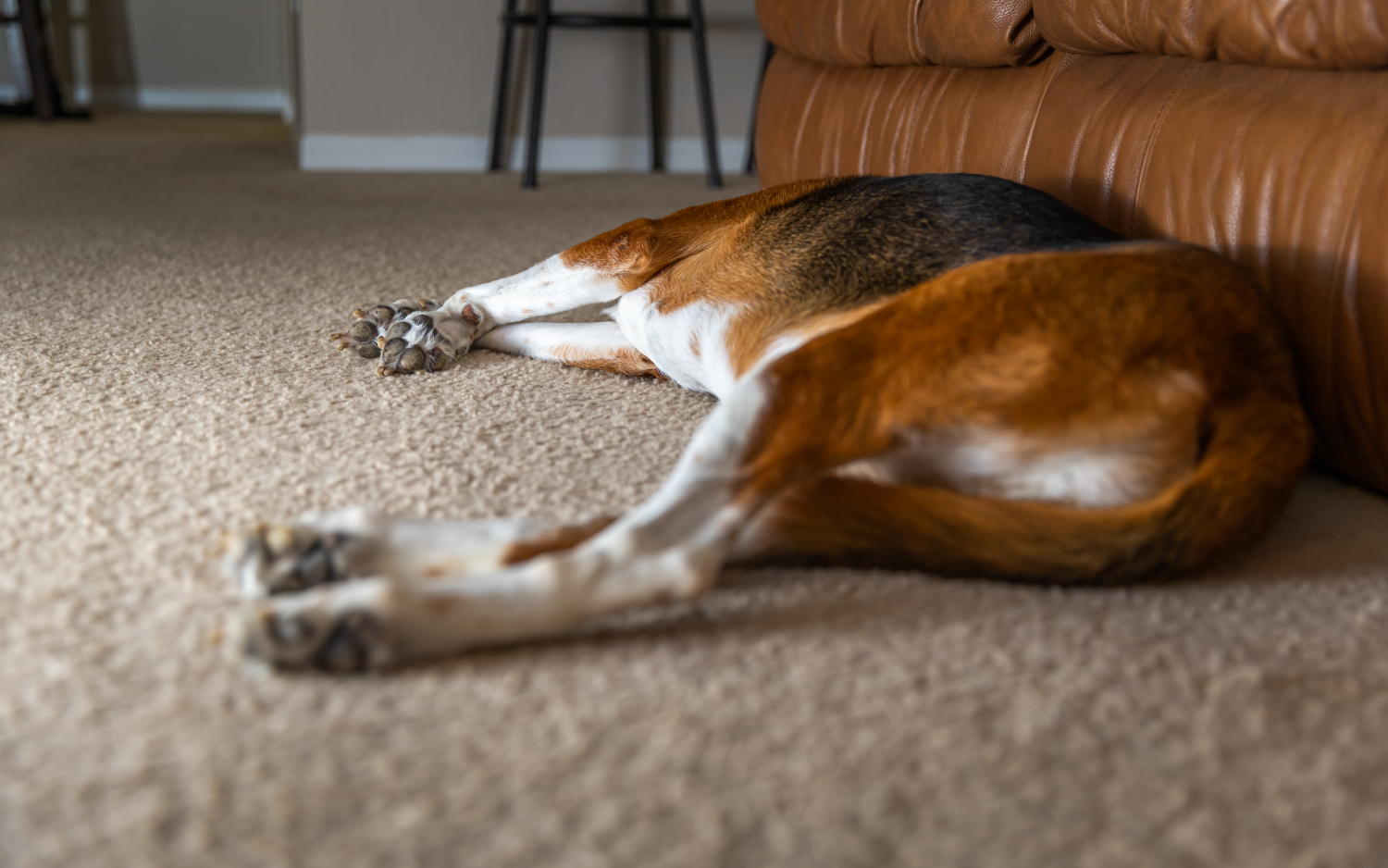
No pet parent wants to think of their dog in distress whenever they leave home. Knowing what to look for means you can identify the problem and find ways to help your pup overcome their feelings.
The tell-tale physical signs your precious pup is experiencing separation anxiety include:
- Tail hanging between legs
- Lip smacking
- Pinned back ears
- Excessive panting
- Raised paws
- Pacing
- Yawning
You might also notice your canine companion goes to the toilet inside when you leave and that they chew your shoes and furniture.
But isn’t chewing normal for dogs? Yes, it is, especially when they’re still young or want to relax, but excessive behaviour of this kind might hint at separation anxiety.
Clinical Animal Behaviourist Rosie Bescoby teamed up with Purely Pets to give us some tips to stop unwanted chewing. She recommends placing valuables out of reach and making sure your playful pup has plenty of suitable kong toys to get their teeth into.
Don’t worry, the toilet troubles and other distressed behaviours also have fixes – more on those below.
Most importantly, you’ll need to make sure your dog is covered with pet insurance. Anxious scratching and chewing can lead to injuries. Plus, if your dog is a bit of an escapologist, they might get themselves into a scrape that needs emergency care.
Insure a pet with us and choose from 15 levels of lifetime cover - there’s bound to be one to suit you and your pup.
6 ways to help with separation anxiety
Separation anxiety is hard on both you and your pup, we know. They can’t bear to be left alone and you feel terrible for doing so, but it doesn’t have to be this way.
It might take some time but stick with it! You should be able to help your faithful friend feel comfortable in their own company (and you can stop feeling bad about leaving them) with these top tips.
1. Identify the cause
Before you take any action, you need to understand why your canine companion feels this way in the first place.
Are they scared? Bored? Not getting enough exercise? Once you know the reason for their feelings, you can do everything possible to eliminate it.
Still not sure what the problem is? Battersea Dogs Home suggests setting up a sneaky webcam to see what they’re up to when you’re not around. This can help spot environmental triggers like the postie knocking on the door or loud cars passing by.
2. Keep calm
Cushions trashed? Puddles of pee on the floor? Coming home to a scene of destruction is no fun – we get it. But getting frustrated with your pet is only going to make things worse.
Try to see it from your pup’s point of view. They feel abandoned for hours on end and then you come home and get cross with them!
However hard it might be to keep your cool, cleaning up the mess and finding other ways to deal with the issue is your best course of action.
3. Don’t leave them for long
This can be difficult when you have to work a lot, but the amount of spare time you have for your pup should be a big consideration before you bring them home in the first place.
Rosie Bescoby highlights the importance of never leaving them alone for longer than they can cope in this video on separation anxiety. Gradually build up the time you spend apart and be consistent.
Dogs should never be alone for more than four hours at a time, even when they are happy by themselves. If you need to go out for longer, you might want to ask a friend or family member to check on them, take them for a short walk or let them out to go to the toilet at least.
4. Make sure they’re comfortable
Leaving your dog in a crate could be the cause of separation anxiety – they should never be confined for hours on end in such a small space.
Instead, make sure your four-legged friend has a comfy bed in a warm part of your home and access to water. Leave them with plenty of chew toys (to minimise destruction) and put the radio on to help them feel less alone and drown out noises from outside.
Don’t forget to take them out to the toilet before you go – otherwise it won’t be their fault if you come home to a little surprise!
Need some more helpful tips on creating the ideal environment for your pooch? When you insure a pet with us, you can use our 24/7 video service whenever you need for quick and professional advice.
5. Show them plenty of love when you return
When you get in, make a fuss over your pup. They’ve done an amazing job at staying by themselves all day and deserve a lovely walk to release their pent-up energy followed by a cosy cuddle on the sofa – sounds like the perfect evening, don’t you think?
This way, they’ll know that even though they have to be left alone for a while, there’ll be plenty of fun and games when you return.
6. Reach out for help
If you and your pup are really struggling, it’s time to ask for help. Call your vet for some tips. They can also refer you to a clinical behaviourist to work with the both of you and build your dog’s confidence.
Don’t forget, you can also use our 24/7 vet video consultation service if you insure a pet with us. We’re here to listen and give any advice we can to keep your dog happy and healthy.
Best toys for dogs with separation anxiety
Stuck for ideas on what to get your lonely pooch? These toys are great for those idle paws when you’re out of the house.
- KONG - Extreme Dog Toy (£8.84) – This tough and durable chew toy will keep your pup busy for hours, especially when you fill it with their favourite treat!
- Snuggle Puppy Heartbeat Stuffed Toy for Dogs (£35.95) – Is your pooch pining for a cuddle? This huggable soft toy comes complete with a pulsing heartbeat to make them feel a little less alone.
- Lesfit Pet Food Dispenser (£7.97) – Puzzle toys are some of the best items to stimulate your hound and keep their minds occupied. Fill this ball with snacks and let your pet while away the minutes until you return.
- Furbo Dog Camera (£178.33) – Yes, this is a little pricey, but it’s really reassuring for your pet. Get notifications when your pup barks, chat with them while you watch them on video, and toss treats when they’re well behaved. What’s not to love?
- Goughnuts Dog Chew Toy (£34.95) – Does your four-legged friend chew through just about anything? Stick this tough donut-shaped toy in front of them and watch them rise to the challenge. We bet they can’t rip through this one!
Top tips for training your dog to be left alone
All dogs need to be left alone at some point. So start the training as early as possible so being separated from you won’t cause problems in the future.
Here are a few top tips from Rosie Bescoby to make the transition easier on your pooch:
- Teach your dog to settle while you’re still at home by putting a barrier between you, like a baby gate.
- Never leave them for longer than they are happy with and go back to reassure them if you hear crying.
- For especially anxious pups, try a dog appeasing pheromone to calm their nervousness.
- Once they’re happy by themselves with you still in the house, it’s time to leave them alone.
- Gradually build up the periods that they are separated from you, but never leave them for more than 4 hours.
Remember, always reward their good behaviour and be consistent. Getting your dog used to being by itself might take a while but it’ll be worth it for you, them and your carpets in the long run!
Insure a pet with us today
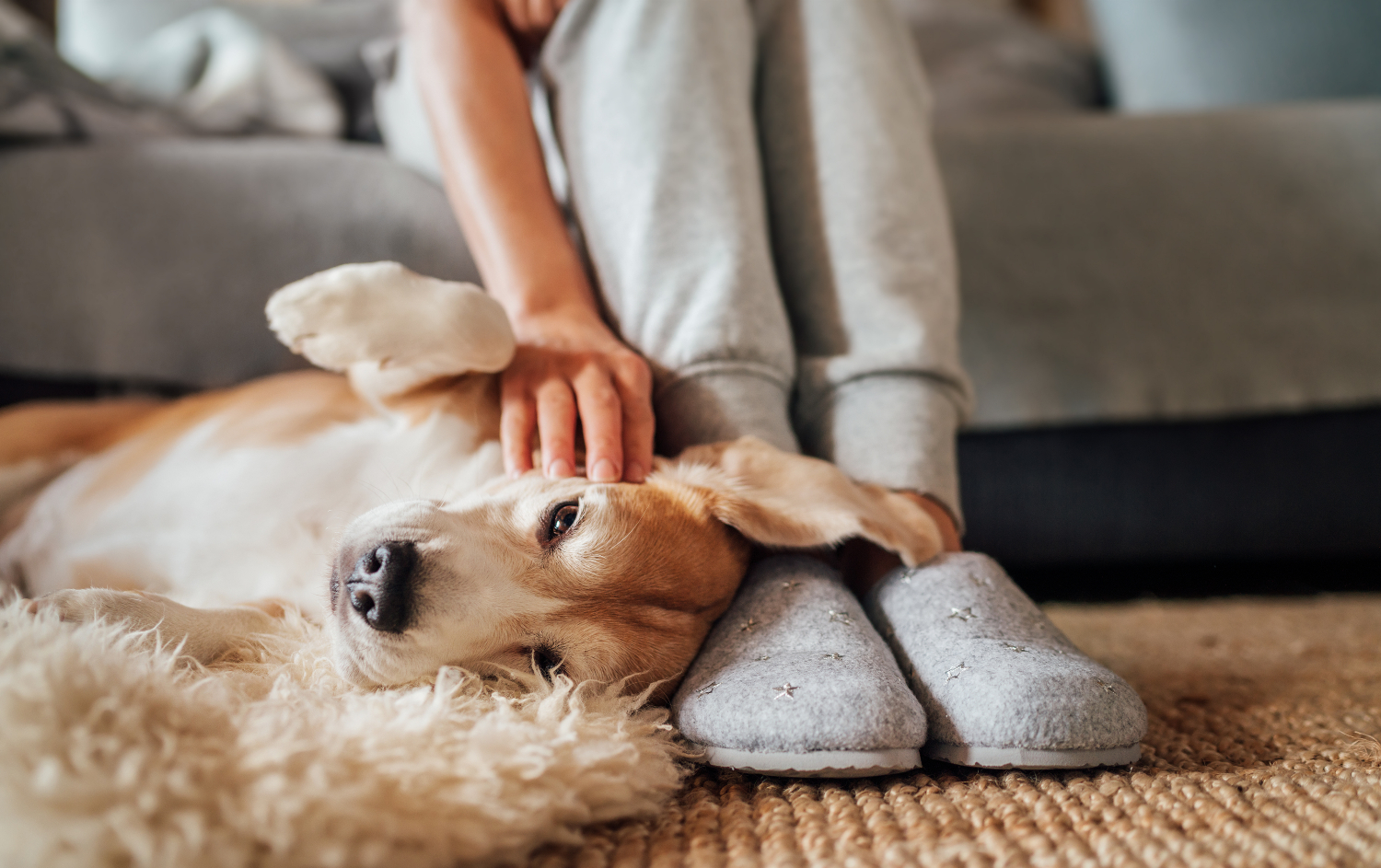
As pet lovers ourselves, we know that looking after your dog is a top priority. That’s why we’ve made the whole process as simple as possible.
When you insure a pet through us, you put a safety net in place that ensures they get emergency healthcare when they need it most.
With insurance from Purely Pets, you can get up to £15,000 worth of cover for your loyal companion.
No time to speak on the phone? No problem. Manage your policy at a time that suits you through our online portal.
To insure a pet with one of our award-winning policies, contact Purely Pets today.
Helpful Pages
Recent Posts
Pet Insurance Quote
- 98% claims paid *
- Claims paid directly to vets
- 24/7 vet video consultations
- Interest free monthly payments

